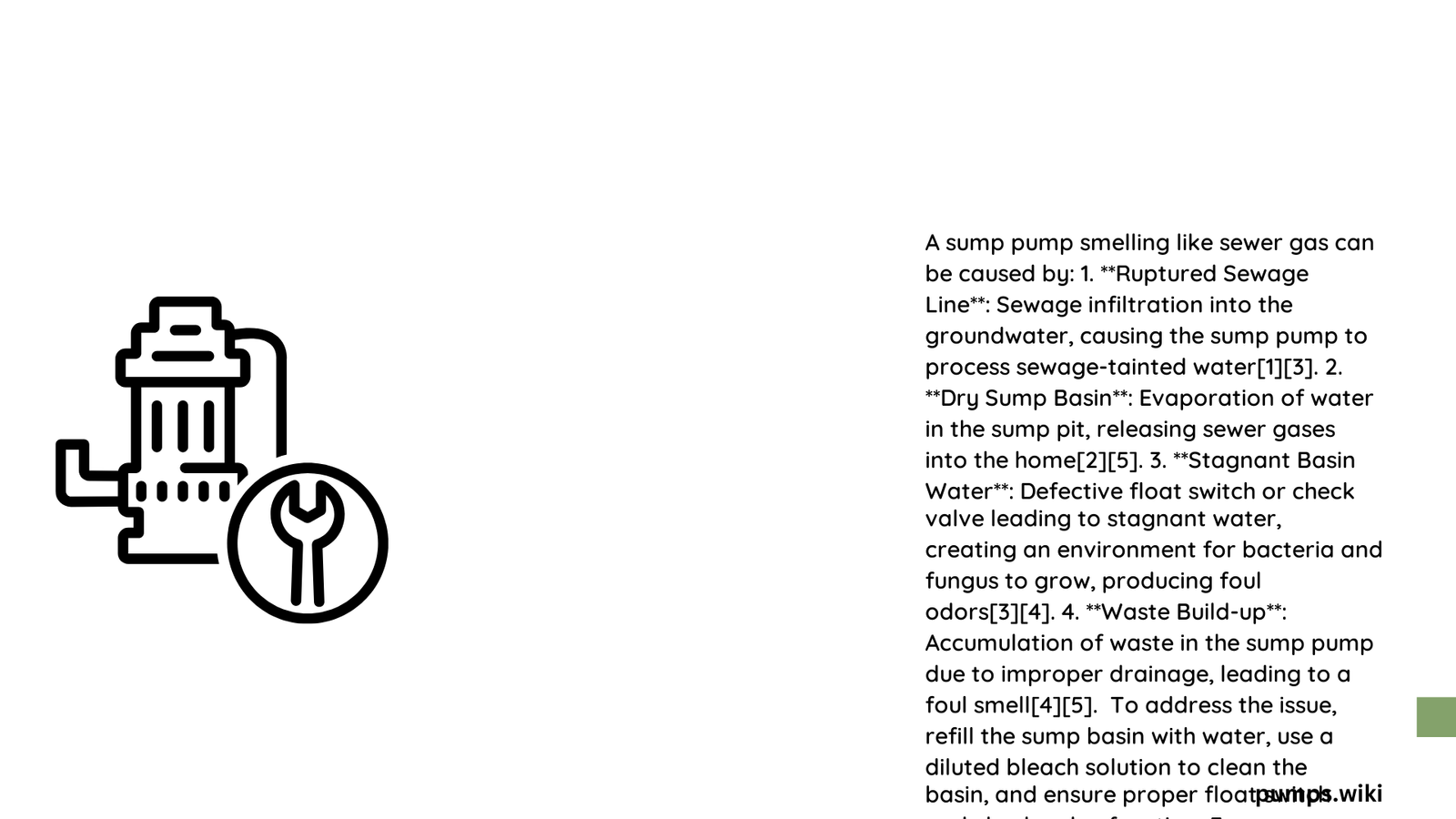Sump pump sewer gas represents a critical home maintenance challenge that can compromise indoor air quality and potentially indicate serious underlying plumbing issues. Homeowners frequently encounter mysterious, foul odors emanating from their basement drainage systems, which can signal potential health risks and structural problems requiring immediate professional intervention and strategic diagnostic approaches.
What Causes Sump Pump Sewer Gas?
Why Do Sewer Gases Develop in Sump Pumps?
Sewer gases develop in sump pumps through multiple complex mechanisms:
- Sewage Infiltration Pathways
- Underground sewer line ruptures
- Groundwater contamination
-
Direct sewage system connections
-
Bacterial Decomposition Processes
- Organic matter breakdown
- Methane and hydrogen sulfide production
- Anaerobic bacterial activity
What Are the Primary Sources of Sump Pump Sewer Gas?
| Source | Characteristics | Risk Level |
|---|---|---|
| Stagnant Water | Bacterial growth | High |
| Dry Sump Basin | Gas escape routes | Medium |
| Cracked Sewer Lines | Direct contamination | Critical |
| Improper Venting | Pressure buildup | Moderate |
How to Detect Sump Pump Sewer Gas?

Diagnostic Techniques for Homeowners
Detecting sump pump sewer gas requires systematic investigation:
- Olfactory Assessment
- Identify specific odor characteristics
-
Distinguish between sewage, sulfur, and mildew smells
-
Visual Inspection
- Check sump basin water levels
- Examine surrounding floor and wall integrity
- Look for moisture or discoloration
What Professional Tools Detect Sewer Gas?
Professionals utilize specialized equipment:
- Infrared cameras
- Gas concentration detectors
- Moisture meters
- Endoscopic sewer line cameras
How to Prevent Sump Pump Sewer Gas?
Maintenance Strategies
Effective prevention involves comprehensive approaches:
- Regular Cleaning
- Quarterly basin disinfection
- Use diluted bleach solutions
-
Maintain consistent water levels
-
Structural Integrity
- Seal potential gas escape routes
- Repair floor and wall cracks
- Install proper ventilation systems
What Repair Techniques Eliminate Sewer Gas?
- Professional sewer line camera inspection
- Targeted pipe repair
- Basin resealing
- Ventilation system optimization
What Are the Health Risks?
Potential Dangers of Prolonged Exposure
Sewer gases contain hazardous compounds:
- Methane
- Hydrogen sulfide
- Ammonia
- Potential carcinogenic elements
Recommended Actions:
– Immediate professional consultation
– Comprehensive system evaluation
– Potential evacuation if severe contamination exists
Cost Considerations
Estimated Repair Expenses
| Repair Type | Cost Range | Complexity |
|---|---|---|
| Basic Cleaning | $100 – $300 | Low |
| Moderate Repairs | $500 – $2,000 | Medium |
| Extensive Reconstruction | $2,000 – $5,000+ | High |
Conclusion
Addressing sump pump sewer gas requires proactive maintenance, professional expertise, and systematic diagnostic approaches. Homeowners should prioritize regular inspections and immediate intervention when unusual odors or symptoms emerge.
